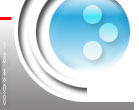Reviewed by: Mel Valentin
In 1962, Chris Marker, a French documentary filmmaker (Sans Soleil), wrote, directed, and photographed an experimental short, La Jetée, a science fiction/time travel allegory. La Jetée is composed of a series of static, black-and-white shots (with one notable exception, late in the film) accompanied by spare, sparse narration. Marker's film later served as the basis for Terry Gilliam's Twelve Monkeys (and, to a lesser extent, the inspiration for James Cameron's The Terminator). More than forty years later, La Jetée remains an evocative, profound, and compelling film, perfect for the cineaste interested in exploring broader questions about the nature and function of cinema, for aesthetes interested in thematic complexity (and paradox), and even for the casual moviegoer, who'll find themselves identifying with the unnamed protagonist and his quest to recapture a lost memory.
La Jetée is set in a world recognizable from countless science fiction literature and films, a (Cold War) world ravaged by a devastating nuclear war. The last survivors have been forced underground in order to avoid the decades-long effects of nuclear fallout. The survivors are divided into two groups, the “victors,” who control whatever scant resources remain, and a prison population wholly dependent on the "victors" for food, water, and shelter. But victory in this future world is meaningless, as even the authoritarian leaders of this underground society seem to acknowledge. Hope doesn't lie in rebuilding a ruined, broken world, but in traveling through time, into the future, where the survivors' descendants may, if asked, send back material aid. One time travel experiment after another fails, the subjects left dead or insane. But our unnamed protagonist succeeds where others have failed: through the war and its aftermath, he has held on to a single, disturbing memory, a memory of a family excursion to the Paris airport, where he witnessed the violent death of a stranger.
The immediacy and power of this single fragment of memory, the remnant of another, earlier life, leads his captors to choose him as their newest test subject, sending him into the past (and eventually into the future). In Marker's post-apocalyptic world, traveling through time is left, for the most part, off screen. Marker avoids both explaining the methodology or rationale behind time travel or in employing a time travel device or machine. Instead, three everyday objects are used for traveling through time, a hammock, a syringe (the contents remain undisclosed), and an eye mask, which, in combination, suggest an interior, not an exterior journey, through time. Even then, the unnamed protagonist's voyage through time is left off screen, edited out of the narrative, leaving the viewer to fill in the details.
The unnamed protagonist's repeated journeys into the past, centered on the fragmentary image from his childhood, expand outward, like a ripple of water caused by a stone tossed into a pond, to encompass an entirely new life. The unnamed protagonist returns to an almost idyllic pre-war Paris. His apparently aimless wanderings lead him to a striking young woman. His frequent appearances and disappearances make him a ghost-like presence in her life, one she apparently welcomes. At one point, in an obvious homage to Alfred Hitchcock's Vertigo, the unnamed protagonist points to an invisible space just outside a massive tree ring sitting on its side, in effect pointing to his own future. Despite his desire to remain in the past with the young woman, his captors have only one goal in mind, saving themselves and their fractured world from an impending collapse.
Cinematically, Marker begins from a paradoxical position: how to convey a story visually in a medium predicated on the moving image. The answer was equally paradoxical: shoot a short film, shot by shot, but when projected, hold each shot, in effect, repeating individual frames of film to create the illusion of stasis, of separate images frozen in time. Tangentially, Marker simultaneously looks backward and forward, using grainy World War II-era photographs of devastation to represent the ruins of a future world and war. Narratively, the time travel premise brings with it the usual paradoxes (i.e., the main character existing simultaneously in two time periods, changing an event in the past that could lead to the eradication of his own future existence, reversed causation, etc.). Ultimately, however, Marker suggests that the past is unalterable, regardless of our desire to change it. Thematically, Marker was no less bold, seeking to explore the metaphysical and existential questions related to time, memory, identity, obsession, fate, and romantic love with the European predilection for ambiguity and paradox. In short, La Jetée remains essential cinema, for the casual moviegoer and the more serious student of the art form.
© Mel Valentin, 18th March, 2005
Special Thanks: Movie-Vault





















